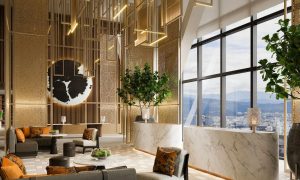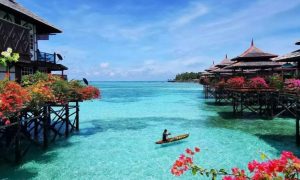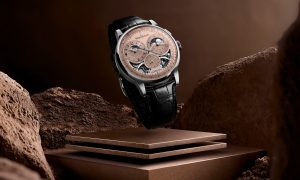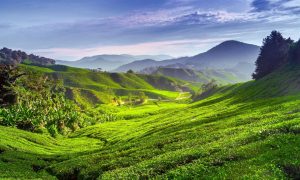This post was written by David Bowden
The Sarawakian city of the Miri must be one of the country's most culturally diverse locations, and David Bowden takes a closer look at this remarkable East malaysian locale.
In mid-May 2005, the people of Miri celebrated earning city status, and while it didn’t quite make the evening CNN news, there was a huge celebration in this northern Sarawak oil town. This leading town and gateway to northern Sarawak attained its city status in recognition of its commercial successes, rapid development, and the cultural diversity of its people.
Malaysia’s largest state is home to many ethnic peoples, and Miri must surely rank as one of Malaysia’s most culturally diverse cities. For decades, historians have noted how the tribal groups from the interior, collectively known as Dayaks, ventured down river to settlements such as Miri to exchange their forest products with those of the coastal people. This still goes on, with the Tamu Muhibbah (the term most frequently used in East Malaysia for markets) being the best place to visit to observe this ongoing exchange.
While oil and timber production has fueled the local economy and led to the establishment of excellent infrastructure, there has always been the thought that these natural resources may one day dry up and that Miri needed to diversify its economic base. Miri is home to several well-recognised and sustainable tourism assets including coral reefs (situated just offshore in the South China Sea) and the mature rainforests and caves of Gunung Mulu National Park (a short flight from Miri). The city is close to four of Malaysia’s leading national parks – Gunung Mulu, Lambir Hills, Niah Caves and Loagan Bunut. Tourism, especially ecotourism, is a globally booming sector of the tourism industry and, if implemented sustainably, it can continue to benefit future generations of people living in Miri.
Diversity and Exchange
With a population of over 300,000 and rising, Miri is a growing city, but one that retains distinctive elements of the various local cultures and of the Chinese people who initially settled here many years ago. Northeastern Sarawak is home to 19 of Sarawak’s 27 ethnic groups, and the cultural mix includes Chinese, Malays, Indians, Ibans, Melanaus, Bisayas, Orang Ulu (mostly Kayan, Kenyah, Kelabit, and Lun Bawang), Bidayuhs, and Eurasians, as well as a sizeable community of foreign oil workers who come from all over the world. The Japanese Gardens in the city centre are not only a tranquil retreat, but also a reminder of the city’s cultural diversity.
Education and the establishment of a university campus in Miri have added an international component to Miri’s cultural diversity. Curtain University from Western Australia has opened a branch campus in Miri to provide new impetus for the city’s growth and development. Through its twinning programme, local students have the opportunity to broaden their cultural horizons through a visit to Australia, and then return with renewed vigour to enrich Miri’s development.
Growing With The Times
Miri is certainly a booming destination, and despite historic links with Western business (specifically the oil company Shell) and a significant expatriate community, it retains many elements of the local cultures, as well as those of the early settlers. Some of Miri’s earliest inhabitants were pioneering Chinese merchants who set up shops from which to trade with the Kayan longhouses to the northeast along Batang Baram.
Miri remained a tiny and insignificant settlement up until the discovery of oil in 1882, though it wasn’t until 1910 that the black gold was drilled in marketable quantities. Since then, over six hundred wells have been drilled in the Miri area, both onshore and offshore.
Over the years, the Malaysian national oil company Petronas has, along with Shell, been responsible for discovering, extracting, and refining Sarawak’s oil deposits. Oil is a major contributor to Malaysia’s export earnings, and Miri has been a key contributor to the boom. There is a big refinery at Lutong (to the north), which is connected by pipeline with Seria in Brunei.
The oil boom in this area began on Canada Hill, behind the city. Oil Well Number One was built by Shell and was the first oil well in Malaysia. It was spudded in August 1910 and shut down in 1972. Today, there is an interactive oil museum on the site, guaranteed to entertain kids while providing good views of the city from the museum’s back verandah.
Jungle Produce
The atmospheric old part of town is focused on the southern end of Jalan Brooke, and it’s a part of the city that’s worth wandering around. The market here is lively, especially in the morning, and there’s plenty of commercial activity along the covered walkways in front of the shophouses. The Central Market offers good bargains, while the Tamu Muhibbah is a newer market complex where Dayaks from around Miri come to sell their vegetables, fruits, and forest products.
Tamu Muhibbah is known as a native jungle produce market, but it has taken on a much broader approach to retailing in recent years. The market is located opposite the Park Hotel and is open around the clock. The Orang Ulu come downriver to sell their produce, and taking a walk around the market provides a good introduction to jungle nutrition. Colourful characters operate impromptu stalls while sitting with their produce displayed on rattan mats. Expect to find unusual products such as yellow cucumbers that look like mangoes, mangoes that look like turnips, huge crimson-coloured durians, tiny loofah sponges, sackfuls of fragrant Bario rice (both brown and white varieties), every shape, size, and hue of banana, and bottles of the potent tuak (rice wine). There is a large selection of dried and fresh seafood, bubok (tiny prawns), and big buckets of catfish, as well as some stacked high with turtles.
Keeping Busy
Miri is also a good place to stock up on tribal souvenirs such as baskets, woven rattan mats, beadwork, Ikat textiles, Sarawak pepper, and jewellery.
The city is a very popular place to shop in conventional retailing complexes, with Bintang Plaza being a large shopping complex situated on the outskirts of the city along the road to the Baram River. It is anchored by Parkson, one of Malaysia’s largest department store chains. For those yearning for the bright lights, Miri also has plenty of excellent restaurants and several good nightspots, all of which are well supported by the locals as well as a regular flow of workers escaping Brunei for the weekend.
Jazzy Days
Culture extends into arts and music too, and the Borneo Jazz Festival (11-12 May) is an annual event that attracts many thanks to its eclectic mix of music. The first Miri International Jazz Festival was staged in the oil-rich city in 2005, and was so popular that it has become an annual event, and re-named the Borneo Jazz Festival.
Like many musical genres, it isn’t easy to classify jazz, nor put it in a certain category. To many aficionados, it comes down to loving it or leaving it. Louis Armstrong, one of the great jazz luminaries of all time is quoted as having said: “If you have to ask what jazz is, you’ll never know.”
Confronted with staging music in a city that’s not overly familiar with the jazz genre, the organisers of the festival usually take a diverse and popularist approach in choosing the artists. The main purpose of the festival is to entertain audiences while expanding their cultural horizons, so don’t expect anything too high brow.
If you appreciate jazz, the festival date is probably already in your diary. If you’ve never been to Miri before and have an interest in eclectic jazz; head on over to Borneo this May.
———————————————————————————————————
Source: Senses of Malaysia Jan-Feb 2013
Read more:
What are your thoughts on this article? Let us know by commenting below.No registration needed.
















